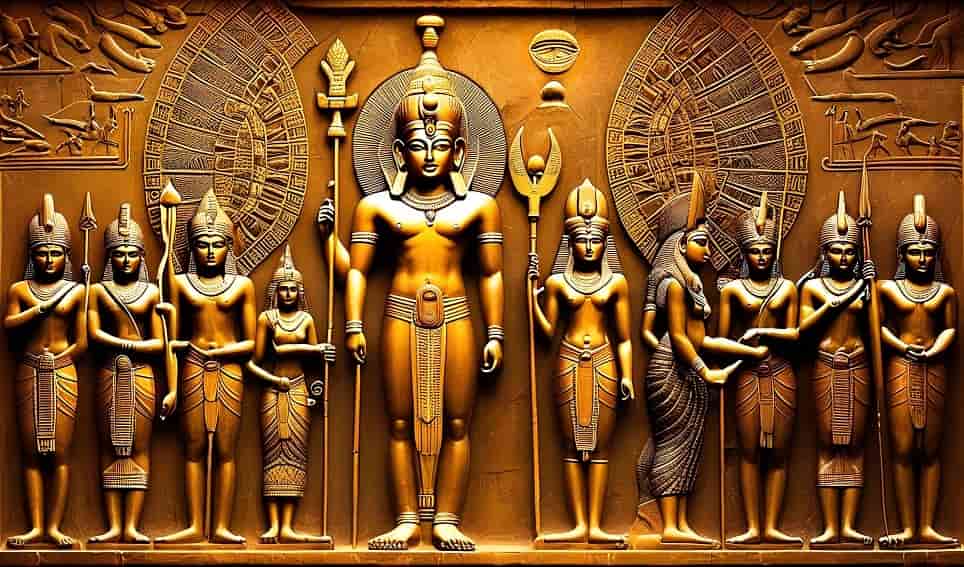Rising Glory: Exploring the Majesty of the Teotihuacan's Pyramid of the Sun
Nestled deep within Mexico's heart, a concealed monument structure lay veiled for centuries. The early 20th century marked a pivotal era, where the world teetered on the brink of myriad discoveries. In 1905, an unwavering archaeologist, Leopoldo Batres, enticed by tales of ancient marvels, plunged into the thickets of Teotihuacan.
As he and his team fastidiously cleared layers of soil, what emerged surpassed their wildest imaginations—the colossal pyramid of the sun, towering at an awe-inspiring 216 feet. This gargantuan structure stood as one of the world's largest pyramids, crafted from over 3 million tons of volcanic rock. However, its enormity wasn't its sole marvel.
The precision ingrained in this 2000-year-old structure hinted at advanced astronomical knowledge, its alignment seamlessly syncing with celestial constellations. Yet, despite its grandeur, the enigma persists. Little knowledge exists regarding the architects behind this colossal masterpiece and the mysteries that compelled its construction.
A Brief Glimpse into the Pyramid of the Sun
The Pyramid of the Sun, or "Pirámide del Sol" in Spanish, is one of the most iconic and largest structures in the ancient city of Teotihuacan, located about 40 kilometers (25 miles) northeast of modern-day Mexico City. Teotihuacan is a UNESCO World Heritage site and one of the most significant Mesoamerican archaeological complexes.
Here are some key aspects that contribute to the majesty of the Pyramid of the Sun:
1. Size and Structure:
- In the realm of monumental structures, the Pyramid of the Sun stakes its claim as the third largest on the globe. It trails behind the imposing Great Pyramid of Cholula, nestled within the Mexican landscape, and the iconic Great Pyramid of Giza, standing proudly in the arid expanses of Egypt.
- Soaring to a height of roughly 216 feet (66 meters), the Pyramid of the Sun commands attention with its majestic stature. Its foundation, a sprawling expanse, stretches approximately 733 feet (224 meters) on each side, echoing the grandeur of an ancient civilization's ambitious architectural endeavors. The numerical intricacies and vast dimensions weave a tale of mathematical precision and awe-inspiring proportions.
- The pyramid is a stepped pyramid, with a series of platforms leading to the summit.
2. Construction and Architecture:
- The construction of the Pyramid of the Sun is a testament to the engineering and architectural prowess of the ancient Teotihuacanos.
- The core of the pyramid is made of adobe and rubble, while the exterior is covered in large stone blocks. The stones originated from nearby quarries.
3. Ceremonial Significance:
- The pyramid is believed to have had significant religious and ceremonial importance in the ancient city. It is aligned with cardinal directions, emphasizing its connection to celestial events.
- The structure likely played a role in rituals and ceremonies associated with the city's cosmology and the worship of deities.
4. Avenue of the Dead:
- The Pyramid of the Sun is situated along the central axis of the city, known as the Avenue of the Dead. This avenue connects various structures, including the Pyramid of the Moon and other important ceremonial and residential complexes.
5. Archaeological Discoveries:
- Archaeological excavations around the Pyramid of the Sun have revealed intricate murals, artifacts, and sacrificial remains, shedding light on the cultural practices and beliefs of the Teotihuacan civilization.
6. Climbing the Pyramid:
- While climbing the Pyramid of the Sun was once a popular activity for visitors, concerns about preservation and safety have led to restrictions in recent years. However, the view from the top provides a breathtaking panorama of the ancient city and its surroundings.
7. Mystery and Symbolism:
- Despite extensive research, many aspects of Teotihuacan's culture and the purpose of its pyramids remain enigmatic. The city's decline and eventual abandonment add an air of mystery to these impressive structures.
Read:-Discovering Yonaguni Pyramid: A Gateway to a Forgotten World
The Pyramid of the Sun stands as a symbol of the advanced civilization that once thrived in Teotihuacan, and it continues to captivate archaeologists, historians, and visitors from around the world, inviting them to explore its majesty and unravel the mysteries of this ancient city.





























